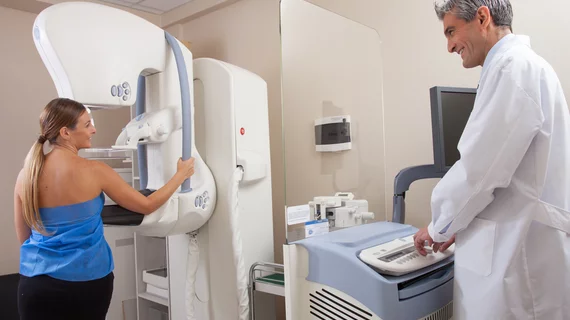Radiologists’ variation in mammography screening performance highlights need for subspecialization
Mammography screening remains the top tool for reducing breast cancer mortality, but its effectiveness may vary by radiologist and practice location, according to a study published Tuesday.
Researchers analyzed factors affecting screening interpretations among more than 1,200 radiologists working across the U.S. The group discovered several variables impacting performance, they reported June 22 in Radiology.
For instance, rads practicing in the West or Midwest—compared to Northeast—were more likely to achieve acceptable screening metrics. Providers conducting breast ultrasound exams, however, were less likely to score well across most performance indicators.
The experts gathered practitioner data from the largest registry of mammograms in the nation, incorporating nearly 700 facilities across 45 states. It’s believed to be the most robust sample of rads’ breast screening performance, which will be crucial going forward.
“As the U.S. population ages and greater numbers of women comply with screening guidelines, it is anticipated that the demand for all radiologists to interpret screening mammograms will increase,” Cindy S. Lee, with NYU Langone Health’s Department of Radiology, and colleagues wrote Tuesday. “Hence, attention to the interpretive screening performance of all radiologists is crucial and strategies to improve interpretive accuracy among generalists would be beneficial.”
The retrospective study included 1,223 rads in the American College of Radiology’s National Mammography Database. Only providers who could be linked to Centers for Medicare & Medicaid Services’ datasets were included.
Looking at patterns, radiologists practicing in the Midwest were more likely to notch acceptable recall rates (between 5%-12%); positive predictive value of recall metrics (3%-8%); positive predictive value of biopsies recommended (20%-40%); and cancer detection rates (at least 2.5 per 1,000 exams).
Those working in the West, meanwhile, were also more likely to produce quality recall rates and positive predictive value recalls but scored better for positive predictive value of biopsies performed. They fared worse when looking at cancer detection rates.
Providers performing breast ultrasound lagged in those key metrics, while breast subspecialists, unsurprisingly, were more likely to yield higher performance scores.
Lee and co-authors could not explain the geography-level difference in screening effectiveness but noted worse performance among breast US providers may be attributed to patient population variables and supplemental screening for women with dense breasts.
“Although the source of some of these associations requires further study, the findings support the value of radiologist subspecialization in screening mammography interpretation,” the authors concluded. “Future quality improvement initiatives may seek to account for predictable sources of radiologist performance variation in implementing tailored educational programs.”
Read the entire study here.

